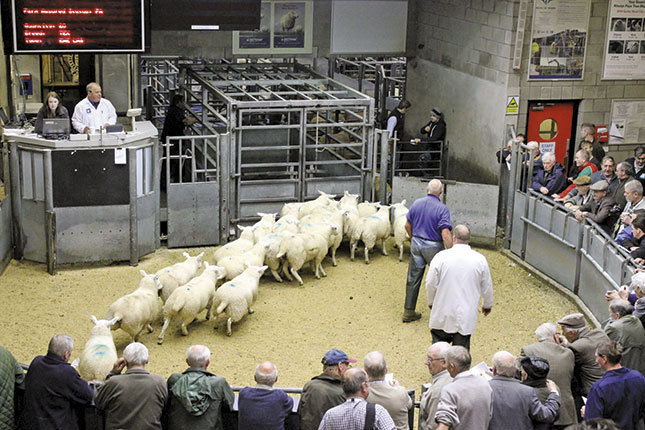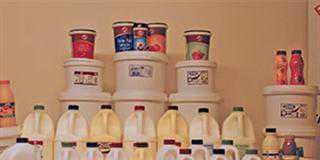
Photo: Anneli Groenewald
The Scottish agriculture sector knows the power of branding. Ask any whisky drinker. The country exports £4 billion
(R72 billion) worth of scotch annually, generating £135 (R2 400) in export revenues every second. When Russia recently introduced a list of retaliatory sanctions against many European countries, Scottish whisky was one of the few products not to appear on that list.
READ:An agribusiness giant rises
Apart from whisky, Scotland has built its salmon, beef and lamb into highly reputable brands. This is according to James Withers, chief executive of Scotland Food & Drink, an industry body tasked with growing the annual turnover of the sector to £16,5 billion (R290 billion) by 2017. Total annual turnover currently stands at £13,1 billion (R237 billion).
Speaking to about 200 journalists at the annual International Federation of Agricultural Journalists’ conference in Aberdeen, Withers said it was crucial for Scotland to create similar brands for its other agricultural products. Strong brands would ensure that existing markets, especially those in Europe, were retained. If they were not, “a European country can decide to move to another country at the stroke of a pen”.
Strong brands also created the opportunity to grow export markets, and thus resilience. In some sectors, work still needed to be done, Withers said. For example, 92% of Scottish dairy produce was sold within the UK. “This means we’ve got
four big customers,” referring to Scotland, Wales, Northern Ireland and England. “We have to grow our customer base in order to become more resilient.” Already about one-third of the 300 000t of lamb produced in the UK is exported, mainly to France.
One breed society that understands the power of a strong brand is the Aberdeen-Angus Cattle Society. Aberdeenshire in Scotland is the home of the Aberdeen Angus. The breed, said to have originated on Tillyfour Farm in 1879, is today favoured by thousands of beef producers worldwide.
Currently, farmers in England receive a premium of between 30p/ kg and 35p/ kg (R5,50/ kg and R6,40/ kg) on Angus beef. At the beginning of October, the average price for steers was £2/ kg (R36/ kg). It is therefore decidely attractive to move to Angus, says farmer Neil Wattie Jnr from the Mains of Tonley Farm in the Alford district.
His family has been running Angus since the early 1990s, when his father, Neil Snr, bought three Angus cows. Currently they have 120 cows on the farm, and started breeding pedigree bulls five years ago. In total, 270 000 Angus-sired calves are registered in the UK annually, and 16 000 pedigree calves are bred annually.
Ron McHattie, chief executive of the Aberdeen-Angus Cattle Society, agrees that the premium price commanded for Angus is a principal driver of the growth of the breed. As Scottish Angus is mainly grassfed and finished on grass, it “ticks the boxes for the consumer”, contributing to the premium paid.
“Nike spent millions of pounds to create that brand awareness,” he adds. “We never had to spend a penny.” Red meat promotions body, Quality Meat Scotland (QMS), is keen to grow the popularity of all Scottish red meat. “We want people to go into stores and restaurants and ask for Scottish beef or lamb,” says Johnny Mackey, head of industry development at QMS. The promotions body receives an annual levy of £4 million (R72 million) to run quality assurance schemes for beef, lamb and pork, amongst other activities. The Scottish beef industry is currently worth £1,2 billion (R22 billion) and supports 50 000 jobs.
Capitalising on tourism
Scotland itself is an extremely strong brand, as demonstrated by the strength of its tourism industry, and the agriculture industry plans to tap into this market. Tourism is currently worth £11 billion (R200 billion) annually, and supports 270 000 jobs. It is also the single biggest contributor to Scotland’s rural economy. During 2013, Scotland received 142 million day visitors and 15 million visitors who stayed over for at least one night.
According to Ken Massie, head of strategic partnerships at Visit Scotland, £1 in every £5 (R18 in every R90) spent by tourists is on food and drinks. Next year, Scotland hopes to further capitalise on this food and drink spend, by driving a campaign called the Year of Food and Drink. “We need to focus on turning assets into experiences,” says Massie. “We’ve got some catching up to do in terms of agri-tourism.”
Putting venison on the map
In the UK, demand for venison is growing at 10% annually. This is attributed mainly to the consumer perception that venison is a healthy red meat option, being low in cholesterol and fat. Ali Loder, deer farmer and president of the British Deer Farmers’ Association, hopes Scottish deer farmers will be able to capture the market for venison. Deer have been farmed in Scotland for over 40 years, according to Loder, who farms on Culquoich Farm at the foot of the Cairngorm Mountains in Aberdeenshire.
To address the growing demand for the meat, Loder, along with Scotland Food and Drink, Scottish Venison Partnership, the National Farmers’ Union Scotland, and SFQC have launched the Deer Farm and Park Demonstration Project to promote deer farming. Part of the project includes five demonstration days a year on Loder’s farm, which have proved popular. The target is to get 300 to 400 new farms to produce deer, but Loder says this figure is highly optimistic.
“We’ll probably only see an extra 20 or 30 farms,” he admits. Currently, about 25 farmers are supplying deer meat to the upmarket UK retail group, Waitrose. “However, we only have enough meat to supply for winter, so we need to import meat from New Zealand,” Loder explains. Presently, Scottish farmers produce only about 1 000 animals a year for meat purposes. The UK imports about 29 000 venison carcasses annually from New Zealand.
“In New Zealand, farmers farm for the market. In the UK, farmers farm what is subsidised, and deer has not been pushed by government until now. British farmers have always had the cushion of subsidies, so they continue farming and get paid regardless. So they’ve never had to go out and look for a market.”
This article was originally published in the 17 October 2014 issue of Farmer’s Weekly.













